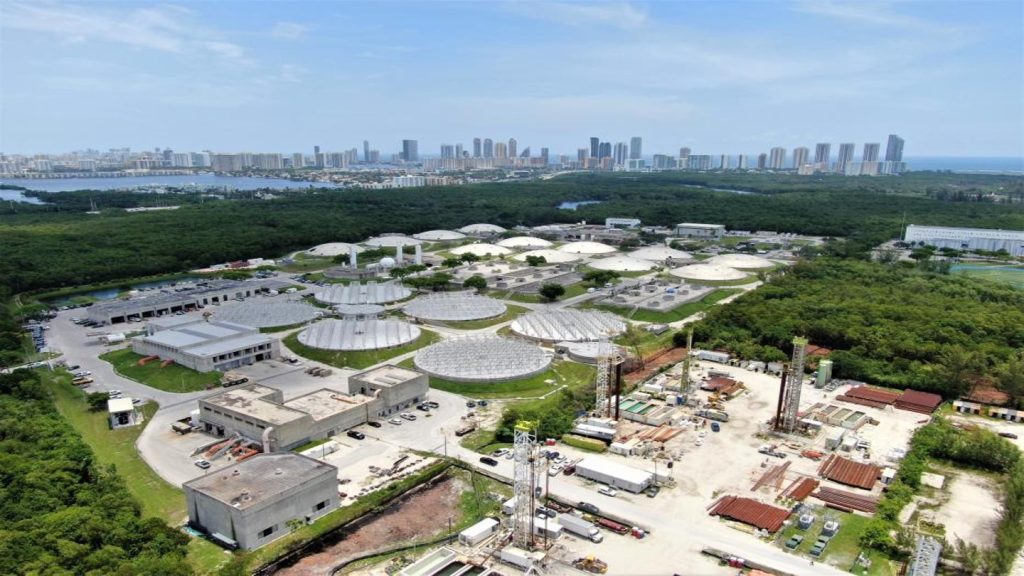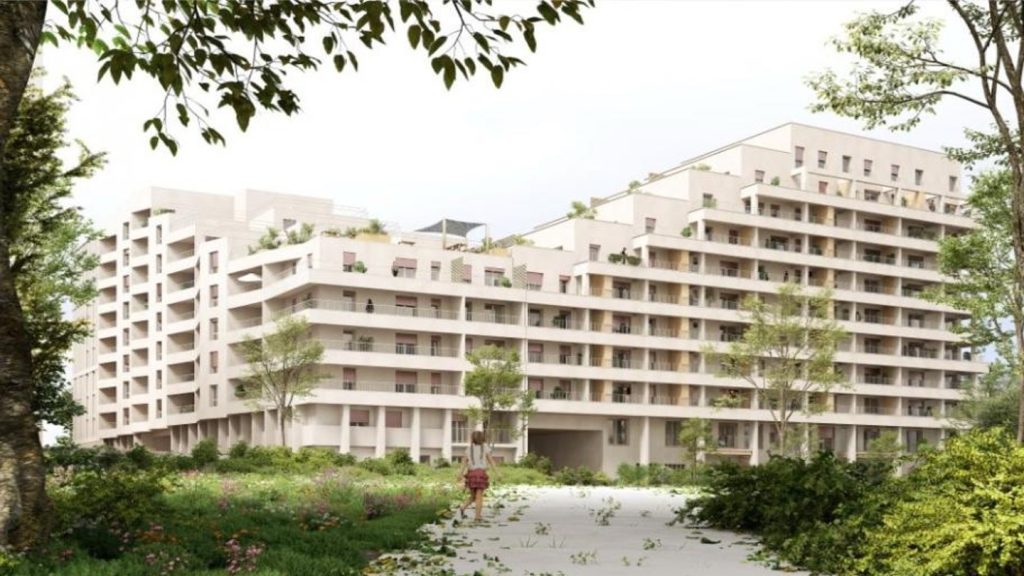The name Holon comes from the Hebrew word for sand and appropriately the site for Ron Arad's first large-scale commercial project, Design Museum Holon, in the ever-expanding municipality outside Tel Aviv, Israel, was a bare dune until just over five years ago. Following four years of construction, the building was completed at the end of 2009 and is due to open in February 2010.
Ron Arad Associates has focused particular attention on architecture in recent years. As a reflection of this, the London-based, Israeli-born designer founded Ron Arad Architects in 2008 and the firm has already completed several buildings, including the Médiacité shopping and entertainment centre in Liège, Belgium.
Design Museum Holon is not Arad's first Israeli project – in 1994, he completed the public spaces of the Tel Aviv Opera House – but it is clearly an experience he has enjoyed.
"When you are an architect and you think of what kind of building you would like to build, a museum is up there because it allows for more architecture than if you do a shopping mall," explains a relaxed Arad sitting in his studio in Chalk Farm, London. We are surrounded by some of his best-known product designs, including the Rover and Tom-Vac Chairs, as well as models of current architectural projects. Arad tells me he retains the same creative methodology for both.
"The task and the destination are different but the approach is the same. There are a lot more people to negotiate with when dealing with architecture. It's part of the job; I don't find it difficult."
See Also:
The museum incorporates five sinuous ribbons of Corten steel, with varying degrees of weathering, that band around the two main gallery buildings to form a façade. Its design takes an extremely sculptural approach, yet Arad brings a unique sense of playful functionality that has been a signature of his product design since his career began in 1981 with the iconic Rover Chair.
How well do you really know your competitors?
Access the most comprehensive Company Profiles on the market, powered by GlobalData. Save hours of research. Gain competitive edge.

Thank you!
Your download email will arrive shortly
Not ready to buy yet? Download a free sample
We are confident about the unique quality of our Company Profiles. However, we want you to make the most beneficial decision for your business, so we offer a free sample that you can download by submitting the below form
By GlobalDataA return to roots
He grew up in nearby Tel Aviv and knows Holon well – Arad took his driving test six times in the streets of the town before he passed. Holon's mayor since 1993, Moti Sasson, has been the powerhouse behind the city's regeneration, helping to bring it out from beneath the shadow of its neighbouring big brother as a technology and design hub. "Holon has a very enlightened mayor and is very active culturally," says Arad. "It has a museum for children, a museum for blind people, a museum for comics and too much public art for my mind."
Next to Arad's building is the Sasson-instigated Holon Mediatheque, which contains a library, theatre and cinema, in addition to the Israeli Design Centre and iMatter, a materials library for design students. The postmodernist pastiche that is the Mediatheque dramatically contrasts with Arad's building. The Corten bands create a surreal enclosed yet open space.
Approached by the client, the Municipality of Holon, in early 2003, the original plan was to convert an old library into the design museum. The practice, in collaboration with RCA tutor Daniel Charny, concluded that the expense would be large and the result unsuitable, and convinced the municipality to create a new-build project. "We explained to them that for the same money we might as well build a new building rather than struggle with things we'd inherited," says Arad.
He tells me that his brief was to design a building that could appear on a postage stamp; a building that would put Holon on the map the way that the Guggenheim did for Bilbao. While Design Museum Holon certainly has presence, it's presumptuous to compare it to Gehry's most celebrated work. For a start the budget was just $15m, all provided by the local authority, in comparison to the Guggenheim's $100m. "We made the rules," Arad says. "There was nothing to mould anything into. We were also involved in writing the brief for the museum, writing the programme and we were basically in a position where we pretended that we had no one to please but ourselves and designed it, which of course is never true."
Design Museum Holon buildings
Design Museum Holon is made up of two primary galleries with several additional alternative exhibition and education spaces. Gallery 1 (500m²) has a vaulted polystyrene ceiling allowing the clear natural light of the region to flood in, making it ideal for sculptural displays. The second, smaller gallery (200m²) is taller but allows for a more intimate visitor experience. The steel bands enclose the gallery spaces with their east-looking façades open. "There are rectangular galleries so there is a space between the envelope and the exhibition and that space is used for circulation, for services," says Arad.
The site was, until a few years ago, a bare dune and Arad was left to work with a 3,700m² site. According to the young director of Ron Arad Architects, Asa Bruno, who supervised the project, the practice decided early on to vertically displace the two galleries.
"We decided to have a smaller gallery at ground level and a bigger gallery at a higher level, and use the gap between them as an open space courtyard, which in the Israeli climate you could use for ten months of the year very happily as a display place for objects." Bruno tells me the original articulated-shell-based design was shelved as it was technically too complex for the local skill base. "We moved to the language of bands," he explains. "The displacement of these bands allows us to preserve the illusion of 3D curvature, even though every band section is perfectly vertical."
With just 1,250m² of exhibition space distributed over two galleries in a museum with a total floor space of 3,000m², Arad's greatest achievement was to blend the exterior with the interior galleries, seamlessly creating a sculptural whole. Central to the design are the bands of Corten steel. Bruno said at first they considered concrete but the weight prevented a flow in space with the elegance and thinness that they wanted, so steel was chosen. The bands curve at a length in excess of 30m in the air without a single support except, says Bruno, "their own magic and the imagination of the structural engineers."
The Corten was cut and assembled by Marzorati-Ronchetti, a family-run company of metalworkers based near Como in Italy, that Arad has worked with for over 20 years. The different colour shades on the steel were achieved through oxidisation of the Corten – "I like warm, earth colours," interposes Arad. Bruno approached the splendidly named Milan Polytechnic Institute of Oil and Grease for help to create the colours for the Corten, after a hot wire technique, where a wire made of solid metal is fed at high temperature onto the surface, failed. The institute developed a carrier oil that could permeate the steel. "By mixing high-grade pigment into the oil you carry the pigment through the metal so it's like staining wood. Once you have done that, it sits there within the metal for as long as it is protected by the self corrosion.
Design Museum Holon has a real beauty to it and is certainly a refreshing example of intelligent, aesthetic, yet functional new architecture that contrasts with the "bling" of recent projects on the other side of the Gulf. "The mayor said the nicest thing to me when we stood on the ramp when I was last there," says Arad. "He said 'the more time I spend here, the happier I am'. People that come to us know what to expect, a nice, polite, blending architecture."







